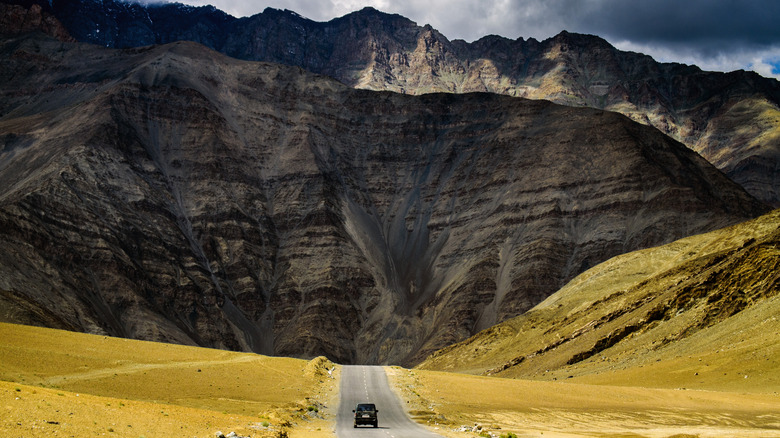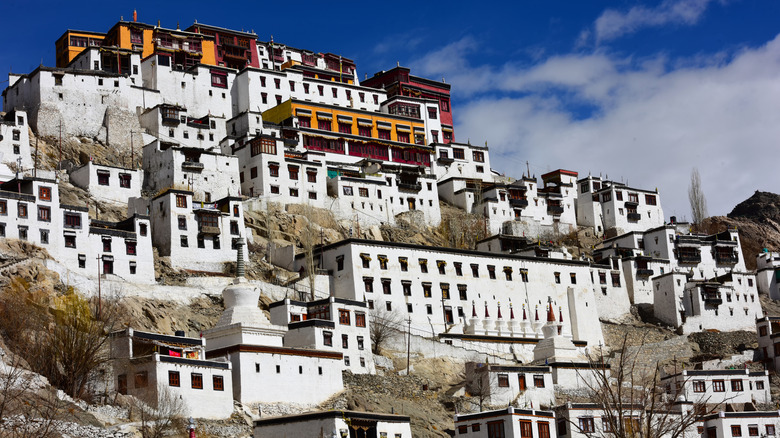Few countries can claim to be as gobsmackingly rich and dense in history, culture, and cuisine as India, right down to the neighborhood level. Defined more by its 28 individual states and regions that stood apart long before India’s 1947 unification, locales range from Rajasthan’s World Heritage Sites, to the opulent “Pink City” of Jaipur, to the snow-capped peaks of Kashmir. In fact, India’s entire northern border abuts the Himalayas and countries like Tibet and Bhutan. It’s there, tucked away in the far northwest of the country, that we find an astonishing expanse of rugged vistas, high-elevation towns, and the world’s highest road system. Enter Ladakh, aka, “land of high passes,” aka, “Little Tibet” for its resemblance to its neighbor.
With altitudes ranging from 5,180 to 18,380 feet, explorers venturing into Ladakh run the risk of altitude sickness simply by paying a visit. Even so, about 300,000 people live in the region’s roughly 23,000 square miles, with over 274,000 of them split between its two main cities: Kargil and Leh. Locals traverse the mountains by roads rather than rail, as there is no direct train connecting the area to the rest of India, nor any trains within Ladakh. Even just getting there is an adventure, one uniquely suited to the road. Therein lies much of the joy of visiting Ladakh, as drivers take its passes to lakes, parks, dunes, monasteries, temples, and more. But the whole route is so scenic that you can pull over anywhere, get out, and simply behold the beauty of the Himalayas up close.
Explore the natural beauty and monasteries of Ladakh
On and off the road, Ladakh excels at providing intrepid visitors with sights and sites worth the time and effort it takes to arrive and carve a path through this remote region. It’s best to consider Ladakh a proper “road trip,” and use the road to take in the landscape while traveling from stop to stop.
On the outdoor side of things, Ladakh is replete with natural beauty, from stunning hikes that rival Everest Base Camp to unique geographical features begging to be explored. Take Pangong Tso, one of the highest saltwater bodies in the world, at over 14,000 feet above sea level. Occupying TripAdvisor’s coveted top 1% of all sites worldwide, Pangong Tso’s pristine waters sit in stark contrast to the austere, tan hills surrounding it. Nubra Valley, meanwhile, is a dark-sanded desert with dunes, camel riding, river rafting, and sparse vegetation. Then there’s Magnetic Hill, a location accessible from June to September that harbors a mystical reputation claiming to defy gravity — or it could just be an optical illusion.
As if this wasn’t enough, road travelers through Ladakh can stop off at any number of the region’s numerous monasteries and palaces, accessible from main roads and each with its own, dense history. Thiksey Monastery 11 miles from Ladakh’s capital, Leh, stands out. Looking more like a small town in the mountainside than anything else, it’s composed of a series of small buildings that rise, ziggurat-like, to a peak. It contains loads of artwork, statues, shrines, stupas (Buddhist domes), and more.




